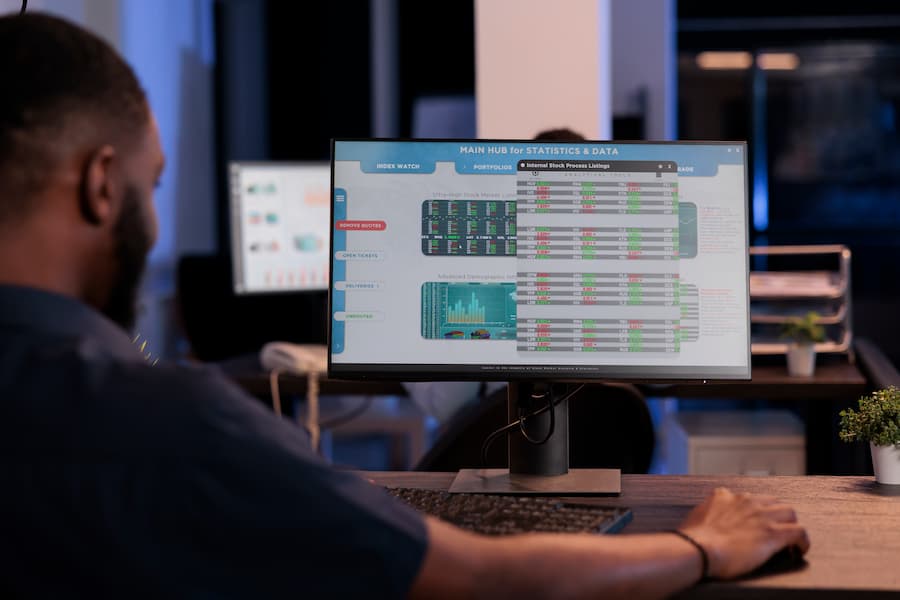The Benefits of Automated Threat Detection and Response Systems
Threat Detection and Response Systems
Threat Detection and Response (TDR) systems are essential in modern cybersecurity strategies, focusing on identifying and mitigating potential security threats in real-time. These systems combine advanced technologies to detect suspicious activities and respond to security incidents effectively, minimizing potential damage and recovery time. The rise of automated TDR systems has revolutionized how organizations protect their digital assets, offering more efficient and accurate threat management.

Automated Threat Detection and Response Systems
Automated TDR systems leverage machine learning, artificial intelligence (AI), and advanced analytics to provide comprehensive security solutions. These systems can analyze vast amounts of data, identify patterns indicative of threats, and execute predefined response actions, significantly reducing the time required to mitigate security incidents.
The Importance of Threat Detection and Response
Understanding Cyber Threats
Types of Threats
Cyber threats come in various forms, each posing unique challenges to an organization’s security. Common types of threats include:
- Malware: Malicious software designed to damage or disable computers.
- Phishing: Fraudulent attempts to obtain sensitive information by disguising as a trustworthy entity.
- Insider Threats: Threats originating from within the organization, often involving employees with malicious intent or negligence.
- Advanced Persistent Threats (APTs): Sophisticated, long-term attacks aimed at stealing data or compromising networks over an extended period.
The Evolving Threat Landscape
The cyber threat landscape is constantly evolving, with threat actors employing increasingly sophisticated techniques. Organizations must continuously adapt their security measures to counter new and emerging threats effectively.
The Impact of Cyber Threats on Businesses
Cyber threats can have devastating effects on businesses, including financial loss, reputational damage, and operational disruptions. Effective TDR systems help mitigate these risks by providing timely detection and response to security incidents.
The Role of TDR in Cybersecurity
How TDR Fits into the Overall Security Posture
TDR systems are a crucial component of an organization’s cybersecurity strategy. By integrating TDR with other security measures, such as firewalls, antivirus software, and security information and event management (SIEM) systems, organizations can achieve a more comprehensive and layered defense against cyber threats.
The Benefits of Early Threat Detection and Timely Response
Early detection of threats and timely response actions are critical in minimizing the impact of security incidents. Automated TDR systems excel in this area, providing rapid identification and mitigation of threats, thereby reducing potential damage and recovery time.
Key Components of an Effective TDR Strategy
An effective TDR strategy encompasses several key components:
- Real-time monitoring and analysis: Continuous surveillance of network traffic and system activities to identify potential threats.
- Threat intelligence: Utilizing data from various sources to stay informed about emerging threats and attack techniques.
- Automated response: Predefined actions that are automatically executed when a threat is detected, ensuring swift mitigation.
Components of Threat Detection and Response Systems
Threat Detection
Effective threat detection relies on various methods, each offering unique advantages:
- Signature-based detection: Identifies threats by comparing known threat signatures to observed activities.
- Anomaly-based detection: Detects deviations from normal behavior, which may indicate potential threats.
- Behavioral detection: Analyzes behavior patterns to identify malicious activities that may not match known signatures.
Threat Intelligence and Feeds
Threat intelligence involves gathering and analyzing information about potential threats from various sources. This data helps organizations stay informed about new and emerging threats, allowing them to adjust their security measures accordingly.
Proactive Threat Hunting and Its Importance
Proactive threat hunting involves actively searching for potential threats within an organization’s network before they can cause damage. This approach helps identify and mitigate threats that may have evaded automated detection systems.
Threat Response
Incident Response Process
The incident response process includes several steps:
- Preparation: Developing an incident response plan and ensuring the security team is trained and ready.
- Detection and Analysis: Identifying and analyzing potential security incidents.
- Containment: Limiting the impact of the incident by isolating affected systems.
- Eradication: Removing the threat from the network.
- Recovery: Restoring normal operations and ensuring systems are secure.
- Post-Incident Review: Analyzing the incident to improve future response efforts.
Developing an Incident Response Plan
An incident response plan outlines the procedures and responsibilities for managing security incidents. This plan should be regularly updated and tested to ensure its effectiveness.
Response Actions and Tools
Automated response actions and tools play a critical role in mitigating security incidents quickly. These tools can isolate infected systems, block malicious activities, and initiate recovery processes without human intervention.
Automated Response vs. Manual Response
Automated response systems offer several advantages over manual response methods, including faster reaction times, reduced human error, and consistent execution of predefined actions. However, manual intervention may still be necessary for complex or novel threats.
Key Technologies in Threat Detection and Response

Endpoint Detection and Response (EDR)
Endpoint Detection and Response (EDR) solutions focus on monitoring and protecting endpoint devices, such as computers and mobile devices. EDR systems are crucial for detecting and responding to threats targeting these endpoints.
Key Features and Capabilities of EDR Solutions
EDR solutions offer several features, including:
- Continuous monitoring: Real-time surveillance of endpoint activities.
- Behavioral analysis: Identifying suspicious behaviors indicative of threats.
- Automated response: Predefined actions to mitigate detected threats.
- Threat intelligence integration: Utilizing external threat data to enhance detection capabilities.
How EDR Contributes to Threat Detection and Response
EDR systems provide comprehensive protection for endpoint devices, allowing organizations to detect and respond to threats targeting these critical assets quickly.
Managed Detection and Response (MDR)
Managed Detection and Response (MDR) services provide outsourced monitoring and management of an organization’s security environment. MDR providers offer expertise and resources that may be lacking in-house, enhancing an organization’s ability to detect and respond to threats.
Comparing MDR with Traditional Detection and Response Methods
MDR services offer several advantages over traditional detection and response methods, including:
- Expertise: Access to experienced security professionals.
- 24/7 Monitoring: Continuous surveillance and threat management.
- Advanced Tools: Utilization of cutting-edge detection and response technologies.
Extended Detection and Response (XDR)
Extended Detection and Response (XDR) solutions integrate multiple security products into a cohesive system, providing a unified approach to threat detection and response. XDR systems offer enhanced visibility and coordination across various security domains.
While EDR focuses on endpoint security, MDR provides managed services, and XDR integrates multiple security products for a holistic approach. Each solution offers unique benefits, depending on an organization’s specific needs and resources.
XDR solutions provide comprehensive visibility and streamlined operations, enabling organizations to detect and respond to threats more effectively. By integrating data from various sources, XDR systems offer a more complete view of the security environment.
Best Practices for Implementing TDR Solutions
Building an Effective TDR Program
Developing an effective TDR program involves several key steps:
- Assessment: Evaluating the current security posture and identifying gaps.
- Planning: Defining the scope, objectives, and components of the TDR program.
- Implementation: Deploying the necessary technologies and processes.
- Training: Ensuring the security team is skilled in using TDR tools and techniques.
- Evaluation: Regularly reviewing and updating the TDR program to address emerging threats.
Importance of Having an Incident Response Plan in Place
An incident response plan is critical for managing security incidents efficiently. This plan should outline the procedures for detecting, analyzing, containing, eradicating, and recovering from security incidents.
Incorporating External Threat Intelligence
Incorporating external threat intelligence into the TDR program enhances detection capabilities by providing insights into new and emerging threats. This information helps organizations stay ahead of potential threats and adjust their security measures accordingly.
Advanced Threat Detection and Response
Techniques for Advanced Threat Detection
Machine learning (ML) and artificial intelligence (AI) play a crucial role in modern threat detection by analyzing vast amounts of data to identify patterns and anomalies indicative of potential threats. These technologies enable more accurate and timely detection by continuously learning from new data and adapting to evolving threats.
AI-driven threat detection systems can identify subtle indicators of compromise that traditional methods might miss, providing a more comprehensive security solution.
Behavioral Analysis and Anomaly Detection
Behavioral analysis involves monitoring user and system activities to establish a baseline of normal behavior. Anomaly detection then identifies deviations from this baseline, which may indicate malicious activity.
This method is particularly effective against insider threats and advanced persistent threats (APTs), as it can detect behaviors that do not match typical patterns, even if they do not have known threat signatures.
Threat Modeling and Simulation
Threat modeling involves identifying and assessing potential threats to an organization’s systems and data. This process helps prioritize security efforts by focusing on the most critical threats. Simulation, or “red teaming,” involves testing security measures by simulating attacks to identify vulnerabilities and improve defenses. These techniques provide valuable insights into potential weaknesses and help enhance threat detection and response capabilities.
Advanced Threat Protection
Tools and Technologies for Advanced Threat Protection
Advanced threat protection (ATP) tools and technologies are designed to detect and mitigate sophisticated threats. These solutions often include:
- Sandboxing: Isolating suspicious files or programs in a controlled environment to observe their behavior without risking system integrity.
- Intrusion Detection Systems (IDS): Monitoring network traffic for signs of malicious activity and alerting security personnel to potential threats.
- Intrusion Prevention Systems (IPS): Extending IDS capabilities by automatically taking action to block detected threats.
Integrating Advanced Threat Protection into TDR Systems
Integrating ATP tools with TDR systems enhances overall security by providing a multi-layered defense. This integration allows for the seamless sharing of threat intelligence and coordinated responses, improving the effectiveness of threat detection and response efforts.
Challenges in Threat Detection and Response

Common Challenges
Threat actors continuously develop new techniques to evade detection. These methods include:
- Encryption: Encrypting malicious payloads to avoid detection by security tools.
- Polymorphism: Frequently changing the code of malware to create new variants that bypass signature-based detection.
- Steganography: Hiding malicious code within seemingly benign files, such as images, to evade security scans.
The Complexity of Managing Multiple Security Tools
Organizations often use a variety of security tools, each with its own management interface and reporting system. This complexity can lead to challenges in integrating and correlating data, resulting in gaps in visibility and delayed responses to threats.
The Skills Gap in the Security Team
The cybersecurity industry faces a significant skills gap, with a shortage of qualified professionals to manage and operate advanced security tools. This gap can hinder an organization’s ability to effectively detect and respond to threats, emphasizing the need for continuous training and skill development.
Strategies to Improve Detection Capabilities
Organizations can enhance their detection capabilities by:
- Investing in advanced detection technologies: Leveraging AI and machine learning to improve threat detection accuracy.
- Integrating threat intelligence: Utilizing external threat intelligence to stay informed about new and emerging threats.
- Conducting regular threat hunting: Proactively searching for potential threats within the network to identify and mitigate them early.
Enhancing Coordination within the Security Operations Center (SOC)
Improving coordination within the SOC can lead to more efficient threat detection and response. This can be achieved by:
- Implementing a centralized management platform: Providing a single interface for managing and correlating data from multiple security tools.
- Promoting collaboration: Encouraging communication and teamwork among SOC analysts to share insights and expertise.
Continuous Training and Skill Development for Analysts
Regular training ensures that security analysts are proficient in using TDR tools and techniques. Training programs should cover:
- New threat detection technologies: Keeping analysts up-to-date with the latest advancements in threat detection.
- Incident response best practices: Ensuring analysts are prepared to respond effectively to security incidents.
- Threat intelligence analysis: Teaching analysts how to leverage threat intelligence to enhance detection and response efforts.
The Future of Threat Detection and Response
The Role of AI and Machine Learning in Future TDR Solutions
AI and machine learning will continue to play a pivotal role in the evolution of TDR solutions. Future advancements may include:
- Improved anomaly detection: More sophisticated algorithms for detecting subtle deviations from normal behavior.
- Automated threat hunting: AI-driven tools that can autonomously search for potential threats within the network.
- Enhanced threat intelligence integration: Seamless incorporation of threat intelligence from various sources to improve detection accuracy.
The Impact of IoT and Cloud Computing on TDR
The proliferation of Internet of Things (IoT) devices and the widespread adoption of cloud computing present new challenges and opportunities for TDR systems. Key considerations include:
- Increased attack surface: IoT devices and cloud services expand the number of potential entry points for attackers.
- Scalability: TDR systems must be able to scale to monitor and protect large numbers of devices and cloud resources.
- Integration: Ensuring seamless integration of IoT and cloud security measures with existing TDR systems.
Evolution of Threat Intelligence
Threat intelligence will continue to evolve, with a focus on:
- Real-time updates: Providing up-to-date information about emerging threats.
- Crowdsourced intelligence: Leveraging data from a wide range of sources to improve the accuracy and relevance of threat intelligence.
- AI-driven analysis: Using AI to analyze and interpret threat intelligence data more efficiently.
What People May Also Ask
What is Threat Detection and Response?
Threat Detection and Response (TDR) refers to the processes and technologies used to identify, investigate, and mitigate security threats in real-time. TDR systems combine threat detection, analysis, and automated response capabilities to protect organizations from cyber threats.
How does an Endpoint Detection and Response (EDR) solution work?
EDR solutions monitor endpoint devices, such as computers and mobile devices, for signs of malicious activity. These solutions use behavioral analysis and threat intelligence to detect potential threats, and they can automatically respond by isolating infected devices and blocking malicious activities.
Why is proactive threat hunting important?
Proactive threat hunting involves actively searching for potential threats within an organization’s network. This approach helps identify and mitigate threats that may have evaded automated detection systems, enhancing overall security.
How can automated response tools assist with threat management?
Automated response tools execute predefined actions when a threat is detected, ensuring swift and consistent mitigation. These tools reduce the risk of human error and enable faster resolution of security incidents, improving overall threat management.
Key Takeaways and Final ThoughtsConclusion
Automated TDR systems are essential for protecting organizations from the ever-evolving landscape of cyber threats. By leveraging advanced technologies such as AI and machine learning, these systems provide comprehensive threat detection and response capabilities.
As cyber threats continue to grow in sophistication, adopting advanced TDR solutions and maintaining a proactive security posture are critical for ensuring robust cybersecurity.
You can contact us by phone, email, or by visiting our offices:
- Phone: (386) 261-8323
- Email: contact@smarttechfl.com
- Address: 771 Fentress Blvd. #10, Daytona Beach, FL 32114












